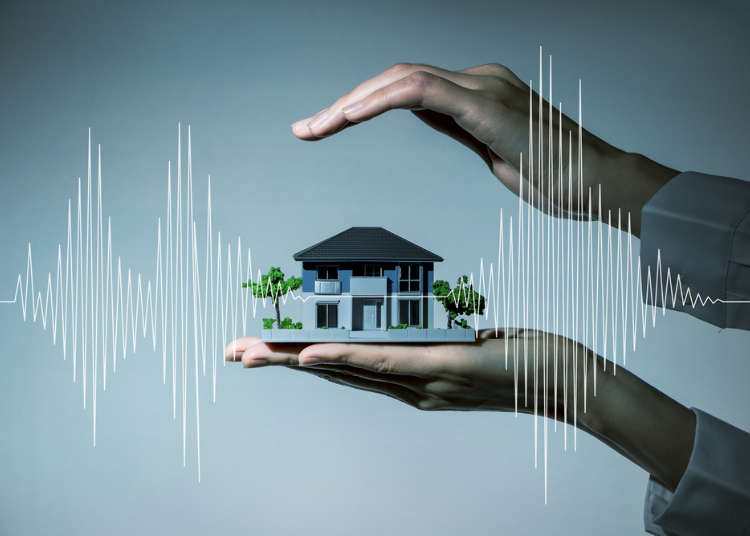
What would you do first if an earthquake happens while you are on a train platform during your trip in Japan? At a time like this, do you think you can properly perform the initial response like a Japanese would?
1. First, know that Japan is a major earthquake country
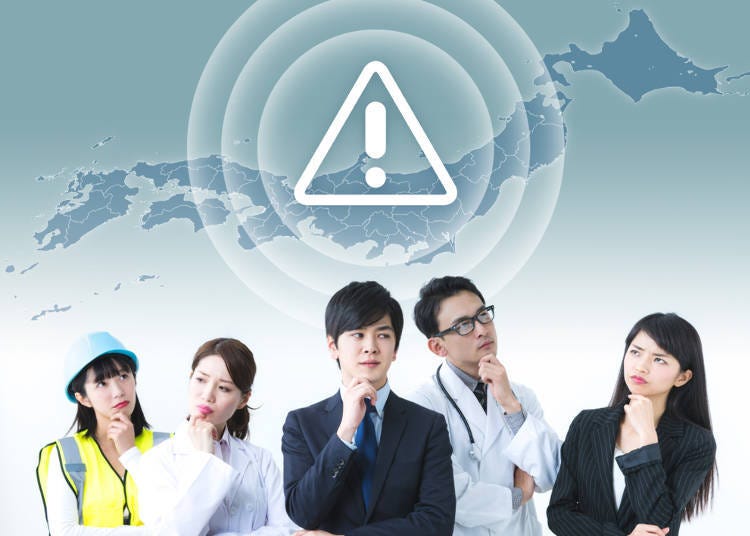
The first thing that you need to know is that Japan is an earthquake-prone country. Despite knowing this, most of you may think that there’s no way an earthquake would occur while you are in Japan.
However, looking at the data, you would realize that we shouldn’t be too complacent. From the global perspective, as many as 20% of the world’s major earthquakes happen in Japan, which means that the country is home to a lot of earthquakes.
If you've never experienced one before, you'd certainly be surprised. Realistically speaking, you may be overcome with fear and anxiety. In addition, experts claim that earthquakes stronger than the Great East Japan Earthquake in 2011 may occur at any time.
Since we cannot predict the moment a major earthquake strikes, we strongly recommend that you have some awareness and preparation before you travel to Japan.
First of all, knowing that Japan is an earthquake-prone country is a big step towards dealing with an earthquake.
2. Initial response to an earthquake

If you have little to no experience with earthquakes, you may not know how one feels, nor that power outages, water outages, or even paralysis of transportation may occur. If this is the case, performing the initial response during an earthquake may pose danger to you.
If you come from a country where earthquakes sometimes occur, you may have been taught to evacuate a building during an earthquake. This might be because the building is not earthquake-resistant like the ones in Japan. In which case, you might naturally rush out of a building when an earthquake occurs in Japan. If you're not aware of the power outage, you might try to get on a non-functioning elevator. Even though transportation has been paralyzed, you might ride the train to the airport. All of this stems from uninformed anxiety.
From the above, it’s important to be aware that earthquakes are a possibility and to think about the initial response when one occurs.
For example:
・If you encounter an earthquake at an inn or hotel
Cover your head with pillows or cushions in your room to keep yourself safe.
・If you encounter an earthquake while walking in a busy downtown street
Cover your head with a bag, etc., and enter a building to protect yourself from walls and signs that can dangerously fall over.
・If you encounter an earthquake at a station or on a train
Cover your head with a bag to protect yourself from falling objects and be careful not to fall from the platform at the station.
Protecting your head from falling objects is part of the initial response in the event of an earthquake.
In addition, if you are by the coast or in the mountains, stay away from the waterside or the mountain slopes to avoid tsunamis and landslides.
Once the shaking subsides, decide what is best depending on the current circumstances by asking Japanese people around you or by looking for information on an app if your smartphone is working. It is useful to have a communication card to get information.
3. Consider secondary disasters such as tsunamis and power outages
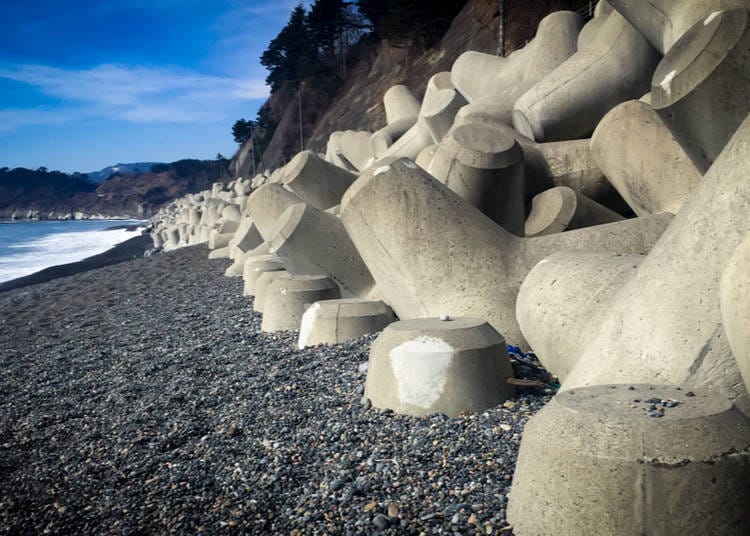
Earthquake disasters can be divided into “primary disasters” and “secondary disasters”. A primary disaster occurs when a building, bridge, road, etc. is damaged, or when furniture collapse and objects fall due to the shaking brought by an earthquake. Landslides and mudslides are also included as primary disasters. On the other hand, fires, power outages, and disruption of lifelines (such as water supply), tsunamis, etc. which occur after an earthquake are called secondary disasters. They are disasters that occur after the primary disaster.
Perform the initial response during an earthquake and be wary of the secondary disasters once the shaking subsides. We are aware that it's hard to think about secondary disasters when earthquakes are hard to understand to begin with, but please understand that this is a possibility. This could result in damage beyond your imagination, such as being injured by a fire, being swept away by a tsunami, all of which are life-threatening.
If you encounter an earthquake at your accommodation and encounter a situation where you can stop a secondary disaster, it is important to move into action by extinguishing the fire (to prevent it from spreading), opening the door (to secure an evacuation route), securing water (to prepare for evacuation lifeline), or wearing shoes (to prevent injury).
4. Protect yourself!
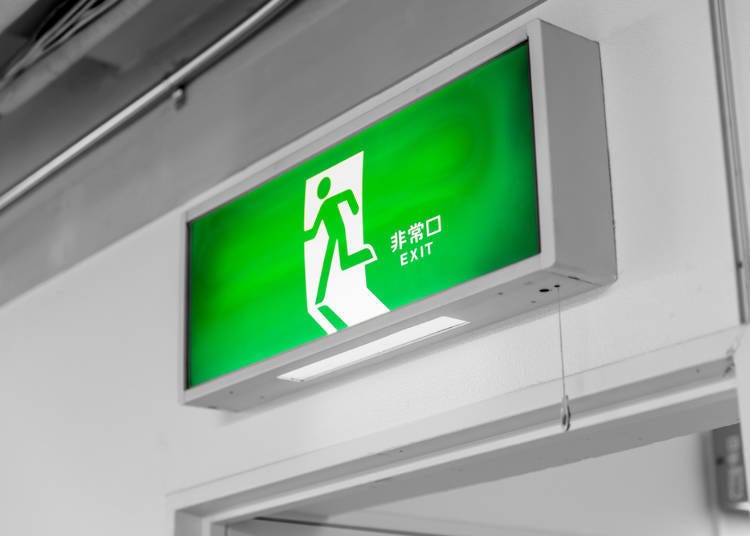
Even if you are with your family and friends, you must protect yourself the moment you are shaken by an earthquake. First of all, if your life isn't safe, you will not be able to protect your family and friends at the time of a disaster.
Specifically, what you need to do is to protect your life away from injury until the shaking subsides or stops. Try to protect yourself during the shaking by avoiding falling objects or moving away from the windowpane.
Another important thing is preparation before travel. Let's take a look at some of the “hard” and “soft” measures that we should prepared in advance.
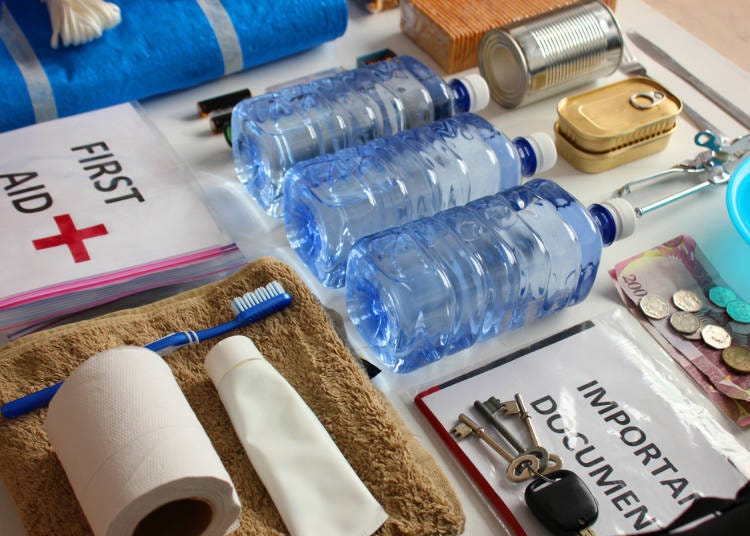
On the “hard” side, bringing flashlights and shoes (better if you also have a helmet), storing water in the accommodation’s bathtub, preparing emergency food, rain gear, sanitary items, and radio, charging smartphones, and creating a communication card (bringing your own) are some of the things that you can do.
“Soft” measures include determining where to gather your family and friends, collecting information, checking the building’s emergency exits, and checking sea and river evacuation routes.
5. Summary
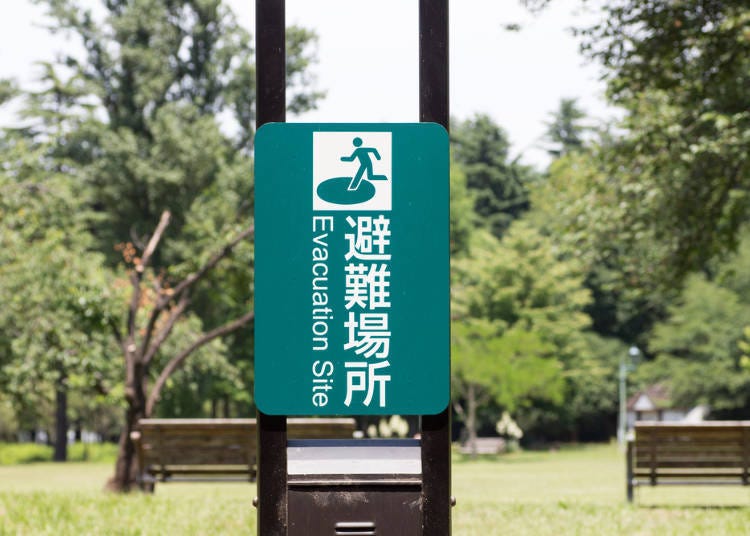
Since you’re not in your own country, you may want to be aware of disasters such as earthquakes when travelling to Japan. During your trip, be prepared to respond calmly to earthquakes anywhere in Japan.
LIVE JAPAN, a tourist information service for foreigners visiting Japan, offers a "disaster information centralization site" that helps you gather information in the event of an emergency and disaster, so please check it out.
*Prices and options mentioned are subject to change.
*Unless stated otherwise, all prices include tax.
Popular Tours & Activitiess
Recommended places for you
-

ISHIDAYA Hanare
Yakiniku
Kobe, Sannomiya, Kitano
-

Jukuseiniku-to Namamottsuarera Nikubaru Italian Nikutaria Sannomiya
Izakaya
Kobe, Sannomiya, Kitano
-
Appealing

Rukku and Uohei
Izakaya
Sapporo / Chitose
-
Goods

Yoshida Gennojo-Roho Kyoto Buddhist Altars
Gift Shops
Nijo Castle, Kyoto Imperial Palace
-

Kanzenkoshitsuyakinikutabehodai Gyugyu Paradise Sannomiya
Yakiniku
Kobe, Sannomiya, Kitano
-

Kambei Sannomiyahonten
Yakiniku
Kobe, Sannomiya, Kitano
-

Enjoy Japan's Gorgeous Winter Lights! Ride the Romancecar to Shonan no Hoseki Illumination
by: Guest Contributor
-

Don't Miss Out! The One Thing You Must Do Before Shopping at Mitsui Shopping Park LaLaport: Get Your Max 10% OFF Coupon Book
-

Tokyo City Pass Upgrade: Harry Potter Studio Tour & Top Sights up to 85% Off
by: Guest Contributor
-

A Travel Game Changer! Go Hands-Free Between Tokyo and Kyoto with LUGGAGE EXPRESS by JTB and JR Tokai
by: Guest Contributor
-

[Extended Offer!](12% OFF KKday Coupon) Mt. Fuji Autumn Leaves, Powder Snow & More! 15 Best Tours to Experience Japan in Fall & Winter
-

Keisei × Keikyu 16-Temple Goshuin Tour: Discover Deeper Tokyo & Yokohama
by: Guest Contributor
-

Osaka Portable WiFi: Wi-Fi Rental Shops Near Osaka Station & How to Book
by: WESTPLAN
-

Nishinari, the slum of Osaka, now at risk of gentrification after becoming a tourist hotspot
-

Playing With Fire: Tasting Tokyo's Super-Spicy 'Arctic Ramen' at Ramen Shop Moko Tanmen Nakamoto
-

Japan's Solo Barbecue Trend: "Hitori Yakiniku" - From 30¢ per Piece!?
-

Fine Japanese Dining in Kyoto! Top 3 Japanese Restaurants in Kiyamachi and Pontocho Geisha Districts
-

Kiyomizu-dera Temple: Guide to Visiting Kyoto's Most Famous Sightseeing Spot
- #best sushi japan
- #what to do in odaiba
- #what to bring to japan
- #new years in tokyo
- #best ramen japan
- #what to buy in ameyoko
- #japanese nail trends
- #things to do japan
- #onsen tattoo friendly tokyo
- #daiso
- #best coffee japan
- #best japanese soft drinks
- #best yakiniku japan
- #japanese fashion culture
- #japanese convenience store snacks












